As the seasons change, you may need to think about changing your seasonal tires. Whether you're switching to winter tires or to summer tires, it's important to think about how you store your off-season set.
You may have them changed by a professional or do it in your garage at home. But what do you do after they have been taken off? Knowing how to store tires after removing them from your vehicle is essential. In fact, it’s more important than most people realize.
If you don’t handle and store your tires properly, their characteristics can change. This can shorten their life. They can even deteriorate so badly in storage that they need to be replaced.
But if you handle and store them correctly, they will deliver years of service – and you’ll save money.
Using some detergent, water and a tire brush, clean tires before storing them. This will help remove a season’s worth of road grime and brake. Clean your wheels, too, if you store your tires on them. Make sure they’re completely dry before the next step.
This next step requires inaction, rather than action. Tires don’t need any kind of dressing or gloss product applied prior to storage. Tire compounds are formulated to resist ozone cracking and other environmental stressors. Such products can hinder rather than help extend the longevity of your tires.
Find a large, airtight plastic bag to fit each tire. Try yard bags or leaf bags. Ensure the bag (and tire) is free of moisture, then remove as much air as possible from the bag (use your vacuum cleaner!) and tape it shut.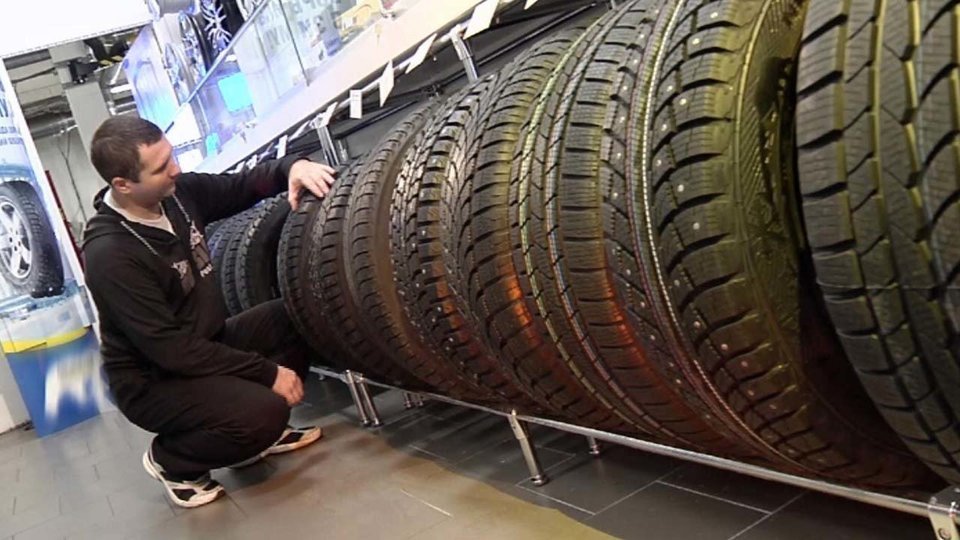 This airtight environment will reduce evaporation of oils from the rubber compounds. Specific tire storage caddies or tire totes are also available. These make transporting and storing tires easier and help keep them grime and dust free. However, they aren’t air tight. If you want to use them, bag tires as above first, then place them in your tire tote.
This airtight environment will reduce evaporation of oils from the rubber compounds. Specific tire storage caddies or tire totes are also available. These make transporting and storing tires easier and help keep them grime and dust free. However, they aren’t air tight. If you want to use them, bag tires as above first, then place them in your tire tote.
UV rays and the sun’s heat can wreak havoc on rubber. Your tire storage location should keep them out of direct sunlight.
In cold weather or in warm, tires should never be stored in the open air, even under a protective covering. Think cool, dry, moderately ventilated – and of course out of the sun. Your basement or another climate-controlled space is ideal. If there is a heat source in the room, the tires must be shielded from it. Most garages, sheds and attics undergo a range of temperatures, precipitation and humidity. You want to avoid these fluctuations.
 Avoid chemical exposure
Avoid chemical exposureYour number one chemical to avoid: Ozone. It’s particularly damaging to tires. Electric motors that use contact brushes generate ozone. These can include:
Ensure your storage area contains none of these items. The following should also be avoided:
Got whitewalls – or other white parts (like lettering) on your tires? In case you’ve decided not to bag your tires, store them with white areas touching other white areas, and black touching black. Here’s why: The black rubber on the white side is compounded differently than the black rubber on the other side. A layer of non-staining black rubber is used on the tire's white side to prevent oils migrating from the black to the white areas and causing discoloration. The black sidewall uses standard rubber. Therefore, store black-to-black and white-to-white to help keep white rubber bright and avoid marks.
Therefore, store black-to-black and white-to-white to help keep white rubber bright and avoid marks.
You have three options for how to store your tires:
The best option is standing, as it puts less stress on the tires. If you must stack, try not to stack too high. You want to avoid it tipping and damaging the tires. Tires mounted on rims? Stacking is actually preferable in this case. Another great option for tires on rims is hanging them from tire racks or hooks. Never hang unmounted tires as this can distort and damage them.
Tires will age. But these tips will help extend their life. If you want to make sure that the storing of your tires is in professional hands we would recommend to let them be stored at your tire dealer. And remember: It’s a great idea to get your tires checked by a tire professional before they are mounted onto your vehicle again for another good season of driving.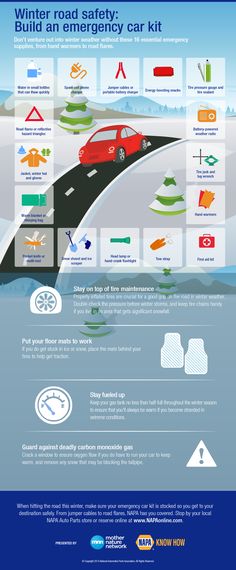
If you have an extra set of tires and wheels for winter or summer driving, proper storage can help you get the most life out of your investment while also having them ready for your next seasonal changeover. We have some tips to help you store those tires and ensure your next seasonal changeover goes smoothly.
Select Les Schwab Tires locations can make tire storage easy. When it's time to change tires for the season, we'll store your other, bulky and dirty tires. Learn more about this time and space-saving option.
It's time to change to your winter tires when nighttime and early morning temperatures stay at or near 40º F. While you won’t ruin your winter tires overnight, they will wear out faster as temperatures rise. Additionally, if you live in a snowy area, consider changing to your snow tires ahead of the first snowstorm of the season.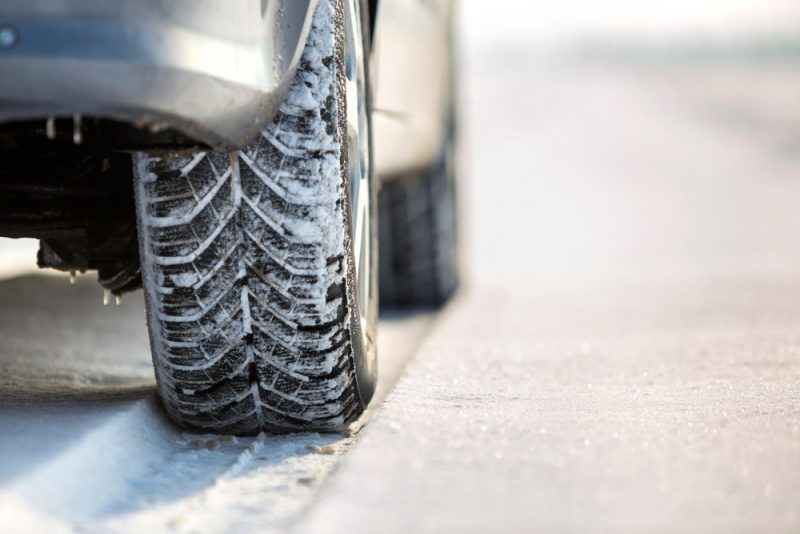
While it is advisable to carry a spare tire or have a plan if you get a flat, it’s not a good idea to store your seasonal tires in your vehicle. Why? Because those tires and wheels will add weight to your car or truck, reducing your MPG or range. Plus, the inside or back of a car or truck is not the ideal environment for storing tires. Keeping them there can cause safety issues and premature tire degradation.
When your winter tires are mounted on wheels (also known as rims), your tires will last longer and your seasonal changeovers will go a lot faster. That’s because we won’t need to remove one set of tires and replace them on a single set of wheels. Instead, we’ll simply remove the prior season’s tire/wheel set and install the next season tire/wheel set, check the tire pressure, perform some visual safety inspections, and send you on your way. Plus, you won’t be charged a changeover fee.
Here’s how to properly store your tires for any season.
When you have the correct air pressure in your tires, it can improve fuel efficiency and safety. But what about tires that are in storage? Those tires need the proper air pressure too. When properly inflated, tires will store better. Check out how to put air in your tires.
Grime, tar, rocks, and other debris can really build up on your tires and wheels. Every time your tires are changed out for the season, clean them off before storing. Scrub them with soap and water, then allow them to dry completely. Storing wet wheels can encourage corrosion and/or pits in the metal. Even a little moisture can cause problems. Some Les Schwab locations offer tire storage and cleaning. Find a location near you.
Once your tires are clean and ready to be stored, put them back into the yellow Les Schwab bags after changing them out.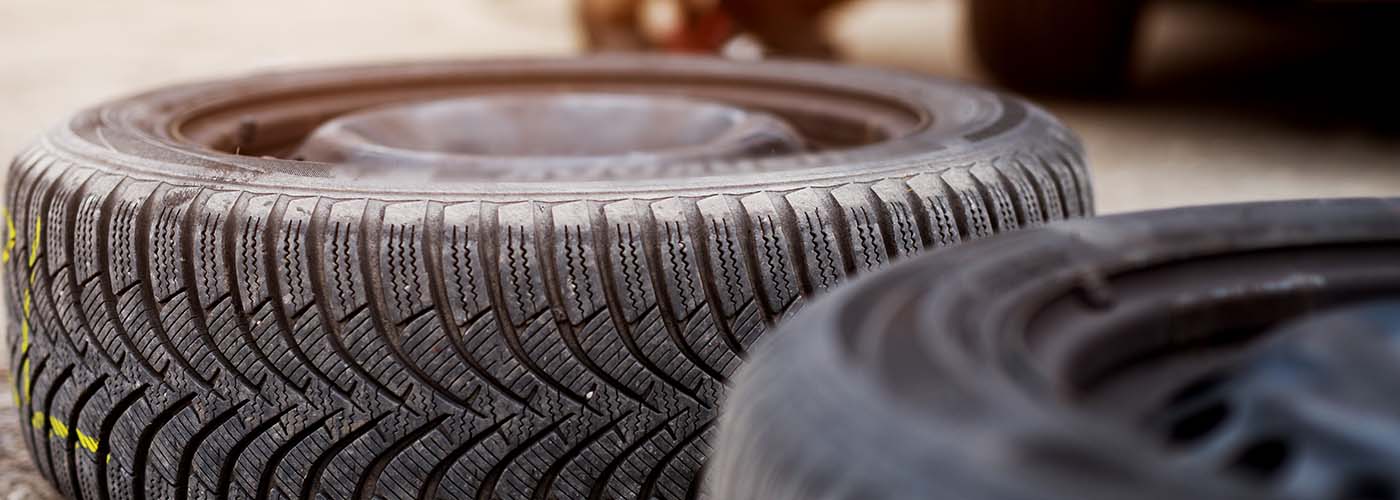 If you don’t have Les Schwab bags, large garbage bags will also work. Depending on where you store them, do what you can to keep dust, leaves, and other materials off the tires.
If you don’t have Les Schwab bags, large garbage bags will also work. Depending on where you store them, do what you can to keep dust, leaves, and other materials off the tires.
To get the most life out of your seasonal tires, proper storage means keeping them out of the elements and under a cover (roofline, awning, shed, garage). This helps minimize wear and maximize the life of your tires. Additionally:
Your local Les Schwab is ready to help with your seasonal changeovers, including adding your winter tires to a separate set of wheels. It’s a smart move that will save you time and help you avoid changeover fees. Be sure to schedule your appointment to avoid the winter and springtime rush. Or just stop by. We’ll help you get the most from your seasonal tires.
Or just stop by. We’ll help you get the most from your seasonal tires.
Les Schwab may be able to help. We offer seasonal tire storage at select stores.
Participating Locations
With the onset of the new season, motorists have a question - how to properly store tires? Can I store them in the garage or on the balcony? What happens if the requirements are not met? We will tell you how to handle tires removed from the car.
Tires are made of soft elastic material that is subject to deformation. In inappropriate conditions, they quickly lose their properties. If you have not learned how to properly store tires, you may experience such unpleasant consequences:
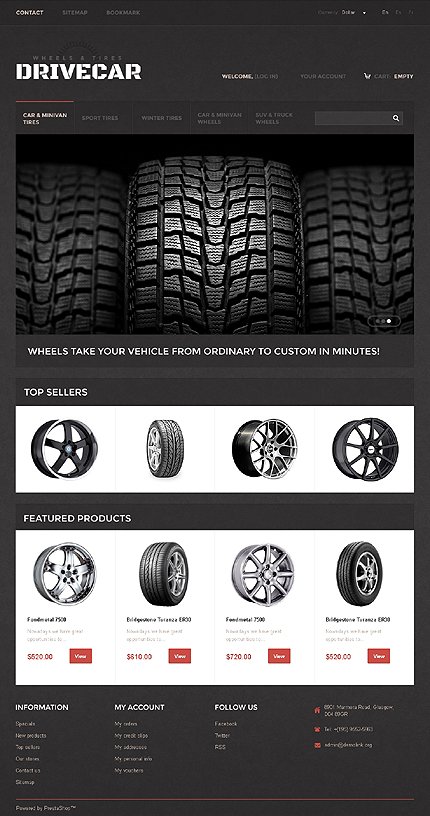
Don't risk your safety!
According to GOSTs, tires can be stored in a dry place, sheltered from precipitation, at a temperature of -30 to +40 C°. These requirements are met by garages, outbuildings, storerooms, glazed balconies and other similar premises.
Interested in how to store tires in winter? The main enemies in this case will be snow and water. They can damage the tire by causing the sensitive material to warp. The same applies to discs that can be corroded. To maintain the properties of the tire in winter, good ventilation should be provided. It will be even better if you can organize heating.
If you need to know how to store wheels in the summer, then you should pay attention to bright sunlight. UV radiation is also detrimental to tires: it deteriorates their properties, causing accelerated wear. Therefore, you should buy special covers made from natural materials. In order for the tires to remain elastic and durable after the end of the summer season, you need to periodically turn them or shift them, observing all the requirements.
In order for the tires to remain elastic and durable after the end of the summer season, you need to periodically turn them or shift them, observing all the requirements.
If you don't have space to put your wheels in your garage or on your balcony, you can take your tires to a special warehouse. The advantages of such a solution are:
Properly storing tires is not difficult, but you need to do some preliminary preparation. Each tire should be thoroughly washed from dirt - adhering soil, asphalt particles and other substances can destroy the material. During this procedure, you can carefully inspect the surface of the wheel, finding cuts, punctures and other damage on it.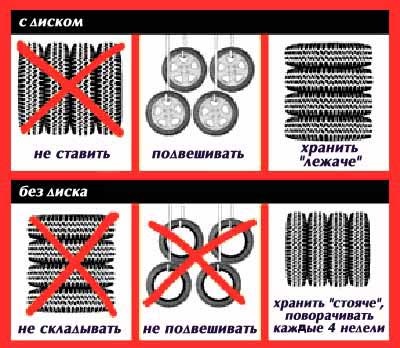
It is advisable to store tires on disks - in this case, they retain their original shape better. In addition, with the onset of the new season, you will save on the services of the service center. Each tire should be pre-treated with silicone grease. Do not confuse it with a color restorer that contains a solvent! In winter, the lubricant will prevent the formation of ice: it will fill the pores of the tire and push the water out of them. In the summer season, the composition forms a protective coating that will help prevent the elastic material from drying out.
To store summer tires, it is advisable to choose heated rooms. With a strong decrease in temperature, they can “suffocate”, covered with microscopic cracks. This is fraught with rapid stratification during high-speed driving and a complete loss of control. If there is no heating, you need to put the tires in a dry closed garage or shed where snow and water do not penetrate.
If summer tires are afraid of frost and moisture, then winter tires are afraid of ultraviolet radiation.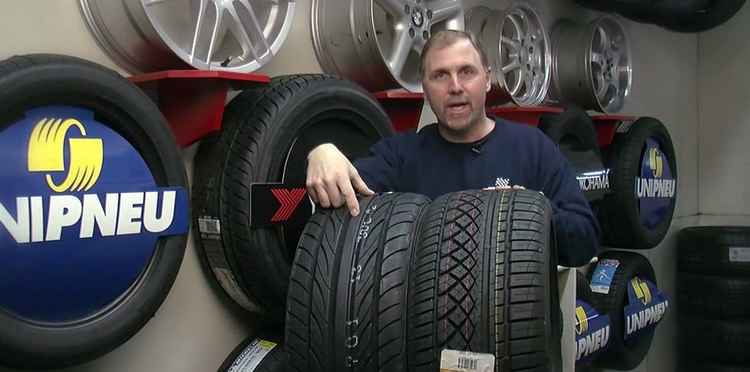 When folding them on the balcony, be sure to cover the wheels with a piece of thick cloth. But do not forget to leave a couple of holes for ventilation so that moisture does not accumulate inside. It is undesirable to store winter tires without disks: in the warm season they become very soft and easily deformed. The consequences of such damage will be unpleasant and even dangerous.
When folding them on the balcony, be sure to cover the wheels with a piece of thick cloth. But do not forget to leave a couple of holes for ventilation so that moisture does not accumulate inside. It is undesirable to store winter tires without disks: in the warm season they become very soft and easily deformed. The consequences of such damage will be unpleasant and even dangerous.
Most motorists are wondering how to store tires on rims? We have already said above that this method helps to save time and money during the off-season “changing shoes”. The ideal option for placing tires on rims is in limbo. To do this, you can install special brackets on the ceiling or in the wall. In this case, the main load is assumed by the metal rim - the soft part is not subjected to unnecessary loads.
To know how to store wheels on rims, you also need to pay attention to pressure. The optimal indicator is from 1 to 1.5 atmospheres.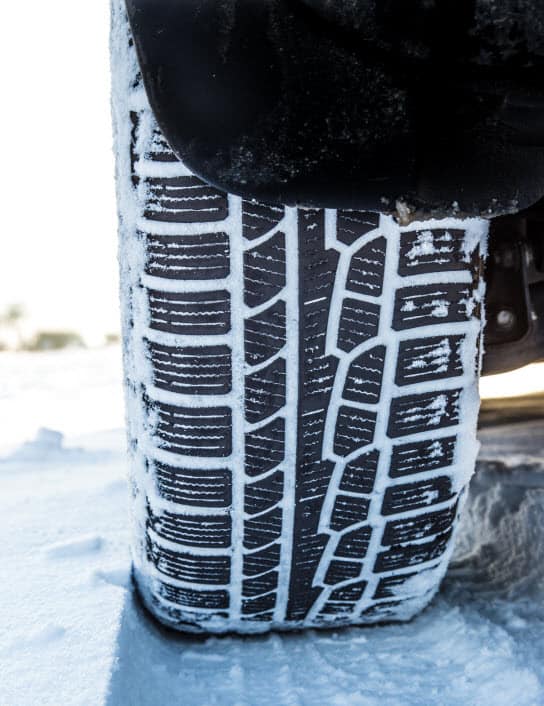 At a lower value, the tires are at risk of squeezing, and at a higher value, bursting. Tires on steel or light alloy rims should be lowered before storage. In a specialized center, experienced employees will take care of this, but in the garage you will have to do it yourself.
At a lower value, the tires are at risk of squeezing, and at a higher value, bursting. Tires on steel or light alloy rims should be lowered before storage. In a specialized center, experienced employees will take care of this, but in the garage you will have to do it yourself.
What to do if there is no space for hanging tires on the rims? In this case, you can not put them vertically - if the pressure decreases, this will lead to deformation of the frame. It is best to stack tires in a pile, like a children's toy "pyramid". In this case, the following recommendations should be observed:
By knowing how to store your wheels on rims, you will save their properties, increase road safety and reduce your costs.
Many car owners have to store tires without wheels, a set of which is quite expensive. In this case, you will have to follow other recommendations. If you decide to store your tires without rims in your garage, never hang them from the ceiling or stack them. In both cases, the elastic material will be constantly subjected to excessive loads. This will lead to tire deformation, which we have already discussed earlier.
How to store tires without rims? To do this, install them vertically. In the absence of discs, this situation will be the only correct one. It will evenly distribute the load on the tire carcass. If you are interested in the question of how to store wheels without discs in the ideal case, you should know that they should be rotated periodically by 30-40 degrees. If possible, you should do this once every two weeks.
To store wheels without discs in the garage, you can buy special covers.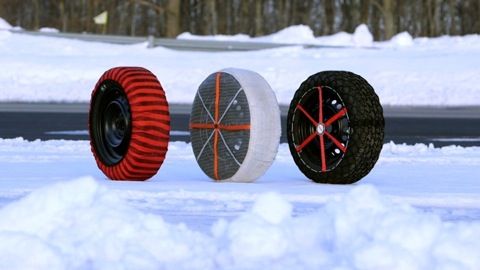 They protect the surface of the tires from friction, UV exposure and moisture. Summer and all-season tires require special care in the cold season - be sure to treat them with silicone grease and put them in a dry place.
They protect the surface of the tires from friction, UV exposure and moisture. Summer and all-season tires require special care in the cold season - be sure to treat them with silicone grease and put them in a dry place.
We told how to store summer and winter tires, what requirements must be observed with and without rims. So you will significantly reduce the cost of car maintenance, as well as make your trips really comfortable and safe.
Changing tires at the start of a new season is not a whim or a luxury. This is a prerequisite for maintaining a high level of safety on the road. Every motorist who understands the importance of such a moment has two sets of tires, sometimes more. At the same time, many car owners do not know how to properly maintain them or what needs to be done to maintain the high performance properties of rubber products for several seasons. In the article we will try to figure out how to store winter tires in order to maximize the resource and not disturb the comfort of your home, the familiar atmosphere of a garage or pantry.
Officially, the time period for "changing shoes" of the car is from March 1 to June 1. The deadline may seem too “long”, and in some cases, erroneous. It all depends on the region and climatic features. It is best to focus on the current weather conditions. In order to maintain driving comfort and safety, while eliminating increased wear of winter tires, it is recommended to change them when the average daily temperature exceeds +70C.
To maintain elasticity at low negative temperatures, winter tires use a special polymer compound. It is resistant to cold, but is “afraid” of thermal exposure. But this does not mean that tires can melt in the summer. The problem is that seasonal material wears out faster, deforms, and loses its shape. As a result, by the next season, tires may become completely unusable, especially with frequent and long trips, when the heating of the rubber increases.
Choosing the right place for tires is very important, which many motorists do not consider. As a result, the wheels "spend" the summer on the balcony, in the pantry, and even just outside under a canopy. The influence of storage conditions is so important that even the usual garage may not be consistent with the quality content of rubber. The best place would be a special tire warehouse or a separate room with artificially maintained microclimate parameters:
When reading instructions on how to store tires on rims in the summer, some car owners overlook the issue of proper preparation. You should not ignore it, since it depends on the quality in which you get tires after a long downtime. Before laying the wheels, they must be thoroughly washed, it is best to use special chemistry. If there are pebbles or other foreign particles in the tread, it must be removed. They can deform the rubber, which will eliminate or reduce the desired effect of the pattern. At the end, the tire must be dried. The ideal option is natural or artificial low-intensity drying.
The exact answer to the question in what position to store tires, envy of the condition in which they will be laid:
When thinking about how to store tires on the balcony, it is important to know that this is far from an ideal place for the safety of rubber products. Given the above space requirements, only a glazed version on the north, non-sunny side of the house will do. It is important to exclude direct ultraviolet radiation on the surface and strong heating of the coating. At the same time, it is impossible to completely isolate tires so as not to create a greenhouse effect inside. If you regularly use the balcony, you will not be able to ensure the optimal temperature and humidity level. These rules can be ignored if the temperature during the day does not exceed + 250C, in a moderately humid climate.
The use of special covers would be ideal. Thanks to them, the wheels will be protected from external influences, and the handles will make it easy to carry. But it is important to choose not any bags, but only polyurethane. This material protects the rubber from UV rays and allows air to pass through, eliminating the formation of condensation inside.
Thinking about how to store tires in the garage, you do not need to add unique conditions to the general recommendations described above. With natural maintenance of optimal temperature and humidity, they can be placed in a corner on a specially prepared stand, on the floor or suspended. The specific option depends on whether tires are stored with or without discs.
If it is not possible to provide the necessary conditions in the common room of the garage, an additional room or even a viewing hole can be used. At the same time, it is important to exclude an increased level of humidity. For insulation and protection, options with covering tires with a dense cloth are also suitable, which will not allow you to quickly heat up, react to temperature fluctuations and changes in humidity every time you open and close the garage. It is also important that the material is breathable.
Stored winter wheels in specialized tire centers is ideal. This approach will allow you to completely "shift" worries to professionals at an affordable cost. The bottom line is that the company provides a place in a specially equipped workshop, where optimal parameters are artificially maintained, and the wheels are periodically turned over and moved to prevent deformation. You can donate tires for storage to the centers not only for the summer season, but also for the winter.